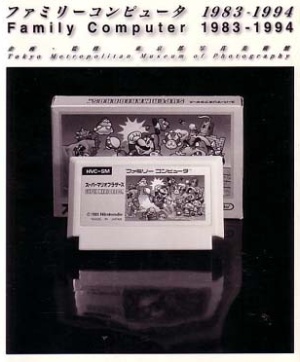
Video Game Book Reviews
There have been several attempts at comprehensive books focusing on the games of the Famicom/NES. David Sheff's Game Over doesn't count since it's mainly about the business. There was a two volume encyclopaedia-style book in Japan (Fami-Complete), and there's also La Bible NES, written and published by the French. Both of these examples, as fine as they may be, are sadly not available in English and are therefore of limited use to those not proficient in either language. There was an American attempt to catalogue all the games with screens and reviews, by a gentleman known online as ManekiNeko, but without publisher backing he put it online. The resulting A-Z entries were brief, uninteresting and lacked insider insight. Without question, the best book for any fan of the Famicom or NES is still Family Computer 1983-1994 by the Tokyo Metropolitan Museum of Photography and Ohta Publishing, in conjunction with the Level-X exhibit to celebrate the Famicom's 20th anniversary.
It is the perfect book. For a start it features interviews with several major Japanese developers, regarding either their work on Famicom games or, if they worked on rival hardware, their views on the era. It features Shigeru Miyamoto, Shigesato Itoi, Yuji Horii, Kouichi Nakamura, Satoshi Tajiri, Ken Sugimori, Hideo Kojima, and Yuji Naka. Their answers are candid, very detailed and - best of all - available in English alongside the original Japanese. In fact everything in the book is available in both Japanese and English. The translations aren't perfect, but that's not a deal breaker. Everything is perfectly understandable, and it makes for more charming reading than something done by committee and filtered through corporate PR.
Additionally it features full-page examinations for major releases and quarter-page bites for other interesting titles - these are more than mere reviews though, and contain nuggets of insight regarding who worked on them and how they resonated with the public. There are photographs of everything else. This is important to note: every single Japanese Famicom game ever released has been photographed and includes an entry detailing its name in both Japanese and English, publisher and developer, precise release date, and launch price. It's safe to say that the Tokyo Metropolitan Museum got their facts right, which makes this tome an extremely valuable resource. The addition of the reviews also offers great insight into the atmosphere of the time and a snapshot of Japanese tastes. There are the obvious contenders (Mario, Dragon Quest, etc), and some US favoured titles are not covered in-depth, but significantly it contains detailed opinions on games unique to Japan which you'd otherwise never find insight on - such as an intra-office simulator fronted by an actual Japanese politician. These entries might not resonate with hardened Zelda fans, but it paints a fascinating view of the foundation of Japan's entire industry.
It's clear that a tremendous love for the subject matter was had by those who produced this extremely professional book, and the fact that they had the foresight to translate it into English is miraculous. The praise given here might seem a tad over-zealous, but if you're even remotely interested in either the Famicom or the NES, then there is no way you could be disappointed by this book.
